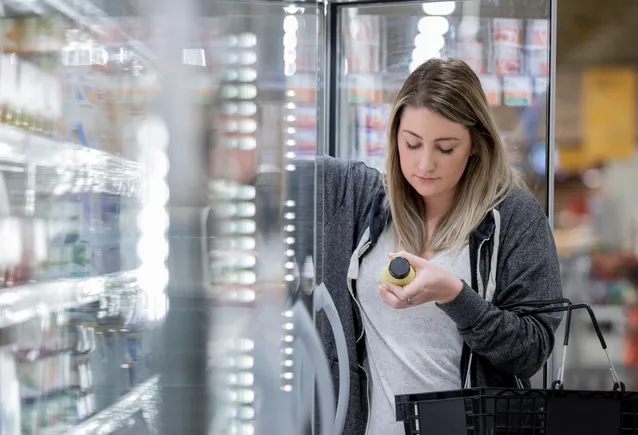Table of Contents
When it comes to packaging design, adjustments may need to be made on food products to accommodate a new informational box proposed by the U.S. Food and Drug Administration (FDA).
As the industry reacts to the FDA’s proposed rule on front-of-pack labeling, there are mixed opinions from food and beverage brands and industry partners. The new nutrition info box is intended to complement the existing Nutrition Facts label, last updated in 2016.
While some groups have raised concerns about the FDA’s approach to front-of-pack labeling, others have noted that the proposed design is more subtle compared to other countries’ labeling systems.
The aesthetic of the FDA’s proposal aligns with the existing Nutrition Facts label, appearing less alarming compared to color-coded systems used internationally. However, there are concerns about the space it will occupy on packaging, potentially impacting a product’s visual appeal.
Christy Lebor from Smashbrand highlighted the potential visual impact of the new box, especially on smaller packaged goods like gum or Jell-O.
Proposed specs for the nutrition info box
- A range of 5% Daily Value or less for “Low”; 6% to 19% DV for “Med”; and 20% DV or more for “High”
- The box would be placed in the top third of the principal display panel (exact location not specified)
- Recommended single, easy-to-read type style, such as Helvetica
- Minimum type size of 8 point, with other specifications provided
- Introduction of an “intermediate” version for smaller packages
Reactions to FDA’s approach
The FDA’s move towards front-of-pack labeling has been a long time coming, with differing opinions on the proposed rule from industry stakeholders.
While the FDA tested various design options, including color-coding, the final decision was a text-only black-and-white box. The rule does not include calorie counts but allows brands to include this information if desired.
Some industry groups criticized the FDA’s methodology and lack of alignment with industry-backed research on effective nutrition labels.
The Consumer Brands Association highlighted the potential financial burden of label changes for companies, with costs ranging from millions to implement.
Considerations for redesign
If the rule is finalized, designers will need to create compliant designs that maintain brand aesthetics while incorporating the new label. Consumer testing will play a role in determining the best approach.
Smaller brands may face resource constraints in redesigning popular products, while larger companies will need to ensure consistency across product lines.
Brands have the opportunity to modernize packaging and engage health-conscious consumers through transparent labeling.
The FDA is accepting comments on the proposed rule until May 16, with key points of discussion likely to include the size and prominence of the info box and the thresholds for low, medium, and high designations.
Companies will need to strategize on achieving a concise design that effectively communicates the required information while maintaining their branding narrative.

